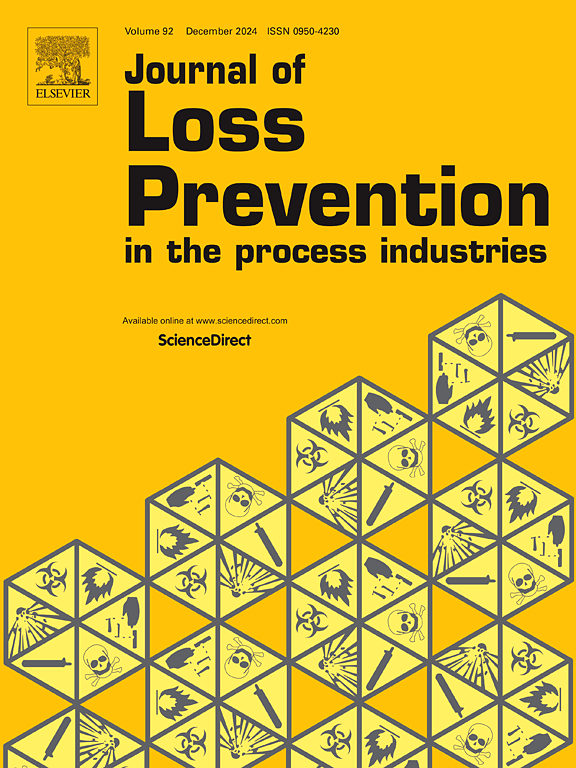Ignition characteristics of mixtures of micro-sized wood dusts and centimeter-sized flakes and fibers initiated by deposit fires
IF 3.6
3区 工程技术
Q2 ENGINEERING, CHEMICAL
Journal of Loss Prevention in The Process Industries
Pub Date : 2025-02-03
DOI:10.1016/j.jlp.2025.105575
引用次数: 0
Abstract
As a highly flammable biomass dust, the explosion potential of wood dust has been widely recognized. However, compared with wood dust, other larger-sized wood processing by-products, such as wood flakes and wood fibers, pose a lower explosion risk due to their difficulty in forming dust clouds. Nevertheless, their fire risk should not be underestimated. Accident case analyses have shown that the explosion risk may increase when wood dust is mixed with wood processing by-products like wood flakes. This study experimentally investigated the ignition characteristics of mixtures of wood dust, wood flakes, and wood fibers, with a focus on the effects of mixing ratios, particle sizes, and spatial confinement on explosion risk. Whether in confined or open spaces, smoldering wood dust (D50 = 137 μm) as an ignition source was found to be insufficient to trigger a dust explosion. In mixtures of wood dust with wood flakes or wood fibers, the mixing ratio played a significant role in explosion risk. When the wood dust content exceeded 50 wt %, explosions occurred at both 0.2 MPa and 0.4 MPa dispersal pressures, with the key factor being the contact between the fireballs generated by burning wood flakes or wood fibers and the wood dust cloud. Conversely, when the wood dust content was lower (25 wt %), no explosion occurred. This study provides experimental evidence for the safe management of wood processing and biomass fuels. It recommends that enhanced preventive measures be implemented during storage and handling, particularly for mixtures with a high wood dust content, to mitigate explosion risks.
微尺度木屑与厘米尺度薄片和纤维混合燃烧的着火特性
木屑粉尘作为一种高度易燃的生物质粉尘,其爆炸潜力已被广泛认识。然而,与木屑相比,其他较大的木材加工副产品,如木片和木纤维,由于难以形成粉尘云,其爆炸风险较低。然而,它们的火灾风险不应被低估。事故案例分析表明,当木屑与木屑等木材加工副产品混合时,爆炸风险可能会增加。实验研究了木屑、木片和木纤维混合物的着火特性,重点研究了混合比例、颗粒大小和空间限制对爆炸危险性的影响。结果表明,无论是在密闭空间还是在开放空间,以阴燃木屑(D50 = 137 μm)为点火源都不足以引发粉尘爆炸。木粉与木片或木纤维混合时,混合比例对爆炸危险性有显著影响。当木屑含量超过50 wt %时,在0.2 MPa和0.4 MPa的分散压力下均发生爆炸,其关键因素是燃烧木屑或木纤维产生的火球与木屑云的接触。相反,当木材粉尘含量较低(25 wt %)时,没有发生爆炸。本研究为木材加工和生物质燃料的安全管理提供了实验依据。它建议在储存和处理过程中,特别是对木材粉尘含量高的混合物,实施加强的预防措施,以减轻爆炸风险。
本文章由计算机程序翻译,如有差异,请以英文原文为准。
求助全文
约1分钟内获得全文
求助全文
来源期刊
CiteScore
7.20
自引率
14.30%
发文量
226
审稿时长
52 days
期刊介绍:
The broad scope of the journal is process safety. Process safety is defined as the prevention and mitigation of process-related injuries and damage arising from process incidents involving fire, explosion and toxic release. Such undesired events occur in the process industries during the use, storage, manufacture, handling, and transportation of highly hazardous chemicals.

 求助内容:
求助内容: 应助结果提醒方式:
应助结果提醒方式:


